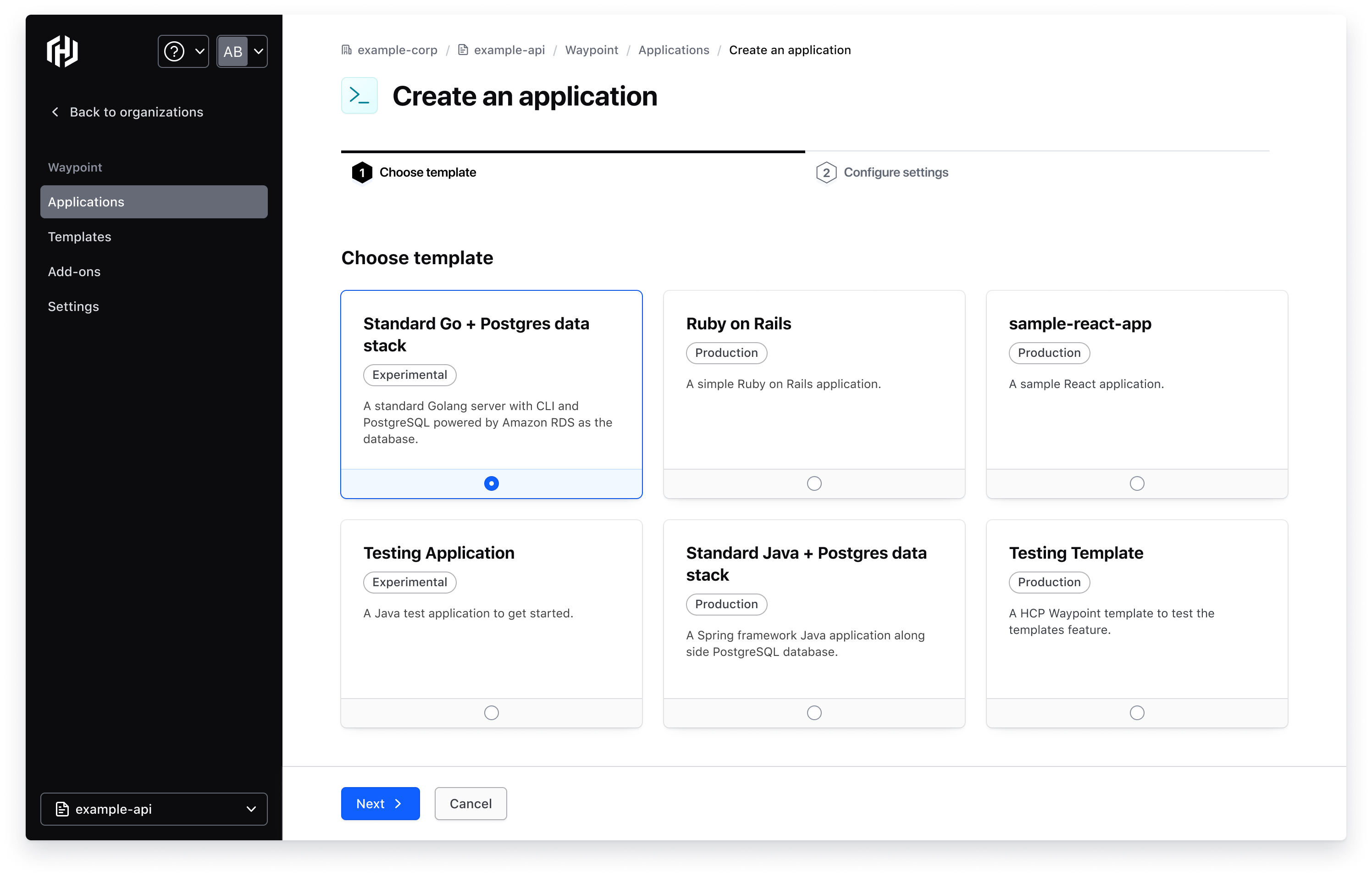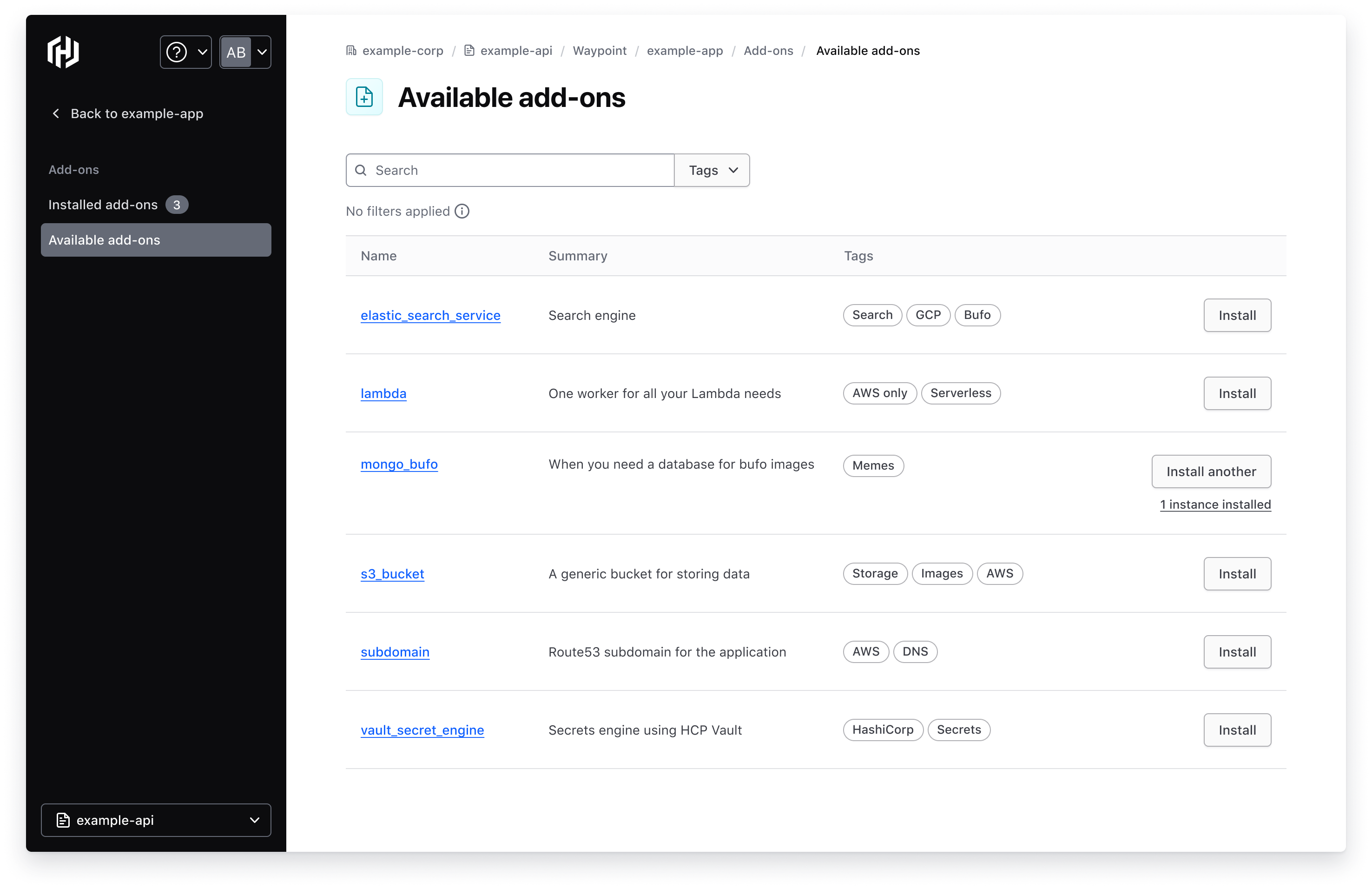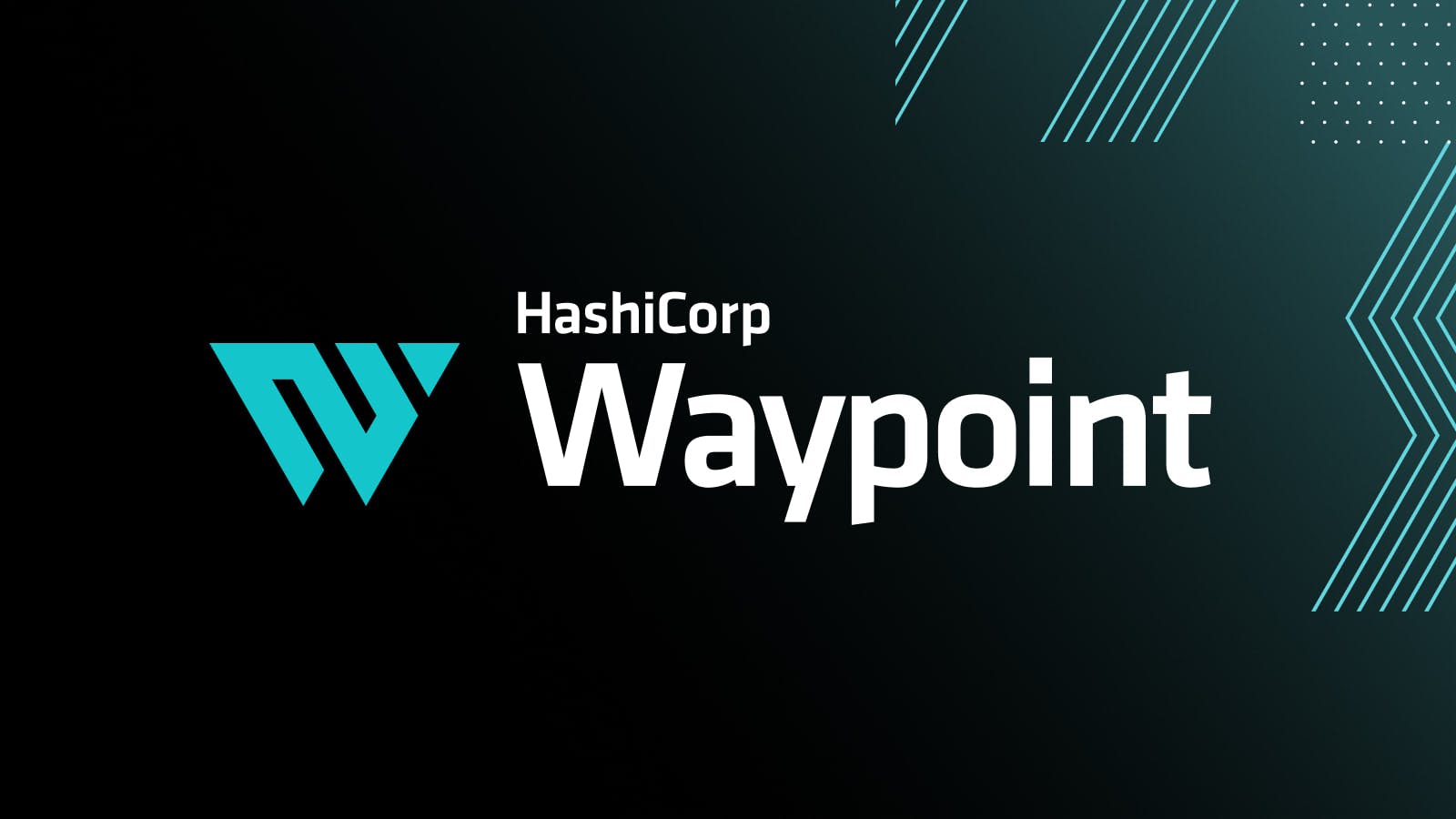At HashiConf Global in October of 2022, HashiCorp announced the public beta of Waypoint on the HashiCorp Cloud Platform (HCP), with the goal of helping to standardize application delivery across platforms. Now, we’re excited to share our updated vision for HCP Waypoint to empower platform teams to define golden patterns and workflows for developers to manage applications at scale.
Along with the new vision, we are announcing a pair of new features for HCP Waypoint today at HashiConf 2023. Designed to help platform teams abstract and share standardized workflows with developers, without making them worry about the infrastructure details, the new features include:
- Templates: Enables enterprise platform teams to abstract and standardize application scaffolding
- Add-ons: Helps define application dependencies, such as infrastructure resources, using HashiCorp Terraform, and makes them available to application developers as dependencies
»The new HCP Waypoint vision
Waypoint started as a project to ease deployment for any application on any platform. The project’s deployment focus included features such as streaming application logs, opening a shell to your application for debugging, generating unique public URLs for applications, and more, all tailored towards providing a platform-as-a-service (PaaS) experience for developers.
To refine our approach, we talked to platform teams from organizations around the globe. It became clear that while Waypoint solved problems associated with the deployment and management of applications, organizations often faced challenges earlier in the application management lifecycle.
»Application delivery challenges for platform teams
As the shift to cloud continues, enterprises are rethinking application delivery. They need to consistently provision and manage a variety of tools and infrastructure, while also providing a consistent experience for their developers. Platform teams are tasked with the challenge of exposing these tools and infrastructure to developers, enabling self-service and enforcing governance.
The challenges they face include:
Software management complexity and consistency: As services grow, infrastructure and software powering those services become more and more complex. Given the size and complexity of the infrastructure and services, platform teams often rely on a variety of complex tools to support development teams, which can provide an inconsistent developer experience. Exposing development teams directly to these tools and infrastructure also makes it difficult for platform teams to change tools as technologies evolve.
Evolving application needs: Application needs evolve throughout their lifecycle and their infrastructure requirements may change during that time. Developers often have an understanding of what their applications need, such as databases and caches, among many other middleware components and dependencies. Platform teams may not want to train or expose developers to the details of how these application dependencies are provisioned.
Lack of insights: A key challenge of infrastructure at scale is tracking all of the applications, and providing a system of record that can be annotated with metadata about them. Platform teams often want a single pane of glass for visibility into their services and infrastructure. This is especially critical when responding to issues like Heartbleed or Log4J vulnerabilities, where it’s important to have up-to-date metadata about applications.
To help meet these challenges, we have updated our vision for HCP Waypoint to empower platform teams to define golden patterns and workflows for developers to enable building and maintaining applications at scale. The goal is to help platform teams provide a clear and consistent developer experience for their development teams while providing a central catalog of applications and their associated metadata. This represents a departure from Waypoint’s original focus, which was more centered on deployment and application runtime.
»Introducing HCP Waypoint templates and add-ons
To deliver on our new vision of enabling platform operators to define golden patterns that are easily consumed by application teams, we are pleased to announce the public beta of both HCP Waypoint templates and add-ons. These new features are designed to help platform teams standardize application patterns in their organizations and provide golden workflows to their development teams to get them up and running quickly.
»HCP Waypoint templates
HCP Waypoint now supports templates, which enable enterprise platform teams to abstract and standardize application scaffolding such as infrastructure, dependencies, application workflows, and access control in one place.
Using HashiCorp Terraform, templates enable platform teams to codify standards and set up guardrails for applications and infrastructure creation in modular blueprints that can be shared and consumed across their organization to deploy applications across environments. Developers can use these predefined templates to create their applications without worrying about the infrastructure details, allowing them to focus on building great applications.

The HCP Waypoint UI creating a new application using a template.
»HCP Waypoint add-ons
To help manage application dependencies, HCP Waypoint now includes add-ons, which allow platform teams to define infrastructure resources using HashiCorp Terraform and make them available to application developers as dependencies. Various stages of an application lifecycle may need dependencies like databases, caches, and queues, among many others. Application developers can easily and seamlessly use add-ons to install these infrastructure dependencies into their Waypoint-defined applications.

HCP Waypoint UI showing a list of available add-ons.
We are excited about these new HCP Waypoint features as they represent the first installments in our plans to execute on the new HCP Waypoint roadmap. Additional features in the works include creating golden workflows, rich application insights, and environments.
»Archiving legacy Waypoint
As we work towards realizing our updated vision for Waypoint, we are re-architecting Waypoint to simplify its development, deployment, and end-user experience. The new architecture is a significant departure from the previous approach, and is focused entirely on delivering HCP Waypoint as a software-as-a-service (SaaS) offering. As such, we are ending the active development of the legacy version of Waypoint, but the archived version of the source code and repository will remain available to use on GitHub.
»Get started with HCP Waypoint
We are excited for users to try templates and add-ons in HCP Waypoint, available today in public beta. To get started, we recommend creating a HashiCorp Cloud Platform (HCP) account and trying HCP Waypoint for yourself. For more information, please visit the HCP product page or sign up through the HCP portal.










